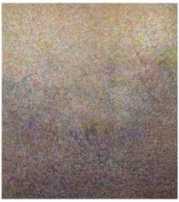Li Taihuan
| 李台还 Li Taihuan | |
|---|---|
 | |
| Born |
1955 (Beijing, China) |
| Nationality | Chinese |
| Education | Fine Arts Beijing |
Li Taihuan (Chinese: 李台还; born 1955) is a contemporary Chinese artist based in Beijing, China.
Artistic career
Li Tai Huan was Art Consultant of the China contemporary art show at the Centre National d'art et de Culture Georges Pompidou in France in 2005.
In the ambitious Nord Art 2012 exhibition at the Kunstwerk Carlsuhette in Germany featuring work of internationally acclaimed artists in the warehouse-style and open air spaces, his work was exhibited in the China Pavilion exhibition "Forms of the Formless" (Chinese: 无形之星形).[1][2]
In 2012, the National Museum of China opened his solo show exhibition. In the opening ceremonies, renowned artist Huang Yong Yu (Chinese name 黄永玉) was present.[3]
In 2014, his work was shown in "Tales of Two Cities: New York & Beijing" at the Bruce Museum in New York, showing a visual pairing of five Beijing-based and five New York-based contemporary artists.[4] In this exhibition, his work was paired with that of Jorge Tacla.[5] In this ambitious project, the ten artists were, prior to the exhibition, engaged in five different global, cross-cultural, artistic dialogues over the course of two years via email, Skype, in person, sometimes with translators, about issues ranging from political and social upheaval, the concept of global culture, and questions about materials and techniques.[6]
In 2014, he held his solo exhibition of painting and sculpture at the Galerie 18 in Paris.[7]
Artistic work
Li Taihuan works in the painting and sculptural mediums.[8] Although his sculptures might be considered as having a Pop Art, Kitsch esthetic, he describes his sculptural work as being identical to his paintings. "I attempt to establish a relation between the sculpture and the furniture item. The furniture item is a sculpture and the sculpture has a specific function. I work on the basis that architecture, sculpture and furniture are closely linked. It is a way of changing our established conscience of these mediums." (Mes sculptures sont identiques. J’essaie d’établir une relation entre la sculpture et le meuble. Le meuble est une sculpture et la sculpture a une fonction. Je pense que l’architecte, la sculpture et le meuble sont liés. Il faut changer la conscience habituelle.)
Li Taihuan: "The artist should not be limited by the object or the form to give a very fine interpretation of it... From close up, the image, the painting or the visual are composed by a multitude of lines of colours, almost abstract. As you progressively take distance you take from the piece, you discover a landscape. My brush doesn't define forms, it contracts forms, reinforcing contradictory links and the interplay. the calligraphy method pervades the reflection of the artist, not only in his creative process but also in how he feels". ("Il ne faut pas être limité par l’objet ou la forme afin de donner une interprétation pleine de fijesse... De près, l’image, le tableau ou le visuel se composent de multitudes de traits de couleurs presque abstraits. Plus on s’éloigne de l’oeuvre, plus on découvre un paysage. Mes pinceaux ne définissent pas de formes mais contractent des formes, renforcent des liens contradictoires et l’intérêt des jeux. La méthode de calligraphie imprègne la réfléxion du peintre, non seulement dans le processus de création mais aussi dans le sentiment").[9]
Selected Bibliography
- A Dialogue Between Hemispheres, Jane L. Levere, The New York Times, July 2014
- Solo Exhibition of Li Taihuan, (Chinese: 李台还艺术展), National Museum of China 中国国家博物馆, October 2012 [10]
- Return of the Old Master: Li Taihuan show at the National Museum of China, (Chinese: 老将回归: 李台还国博办展) Art X, 2012 [11]
Official website
http://www.litaihuan.com/index_en.html
Notes and references
- ↑ http://www.kunstwerk-carlshuette.de/na14/downloads/nordart2012-flyer.pdf
- ↑ http://www.csin.org.cn/News.Detail.asp?ID=724
- ↑ http://art.china.cn/huihua/2012-10/13/content_5401356.htm
- ↑ https://brucemuseum.org/site/education_detail/tales-of-two-cities-new-york-beijing-images
- ↑ https://brucemuseum.org/site/exhibitions_detail/tales-of-two-cities-new-york-beijing1
- ↑ https://brucemuseum.org/site/exhibitions_detail/tales-of-two-cities-new-york-beijing1
- ↑ http://www.gcchine.com/index.php/evenement/single/743
- ↑ http://www.litaihuan.com/SCULPTURE.html
- ↑ http://www.gcchine.com/index.php/evenement/single/743
- ↑ http://www.chnmuseum.cn/tabid/236/Default.aspx?ExhibitionLanguageID=278
- ↑ http://www.artx.cn/exhibit/tzl/305.html